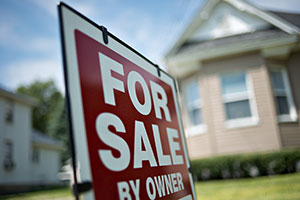Home Prices in 20 Cities Increased Steadily in January

Home values in 20 U.S. cities kept climbing in January, a sign the limited supply of available properties may push prices out of reach for some buyers.
The S&P/Case-Shiller index of property values increased 5.7% from January 2015, after a 5.6% gain in the year ended in December, the group said March 29 in New York. That matched the median projection of 26 economists surveyed by Bloomberg. Nationally, prices rose 5.4% year-over-year.
Home values that are rising more quickly than incomes could pose a problem for the housing recovery, as they put purchases out of reach for first-time and low-income buyers. A wider selection of available homes will be needed to help keep price increases in an accessible range.
“We’ve got a steady pace of growth in the housing market,” said David Sloan, senior economist at 4cast Inc. in New York and the best forecaster of the Case-Shiller index over the past two years, according to data compiled by Bloomberg News. “If buyers are seeing that prices are continuing to rise, they may be encouraged to buy. I don’t think we’re at levels yet that could be seen as unsustainable or dangerously high.”
Economists’ estimates in the Bloomberg survey for the 20-city gauge ranged from gains of 5.4% to 6.4%. The S&P/Case-Shiller index is based on a three-month average, which means the January figure also was influenced by transactions in December and November.
All of the cities in the index showed a year-over-year increase, led by an 11.8% gain in Portland, Oregon. Seattle and San Francisco rounded out the top three. Eleven cities saw year-to-year prices climb at a faster rate than in December. Chicago showed the smallest increase, at 2.1%.
The year-over-year gauge provides better indications of trends in prices, according to the S&P/Case-Shiller group. The panel includes Karl Case and Robert Shiller, the economists who created the index.
Low inventory “means that would-be sellers seeking to trade-up are having a hard time finding a new, larger home,” David Blitzer, chairman of the index committee at S&P Dow Jones Indices, said in a statement. “While low inventories and short supply are boosting prices, financing continues to be a concern for some potential purchasers, particularly young adults and first-time home buyers. The issue is availability of credit for people with substantial student or credit card debt.”
On a monthly basis, home prices in the 20-city index adjusted for seasonal variations increased 0.8% in January for a second month. The Bloomberg survey median called for a 0.7% gain. Unadjusted, values were little changed.
Steady improvement in home prices is an important component of the recovery because it helps lift household wealth. As Americans see the values of their homes appreciating, they may be inclined to spend more as well, providing a boost to economic growth.
Other housing data released in recent weeks have painted a mixed picture of progress in the industry. While sales of new homes rebounded in February, closings on previously owned homes, which make up about 91% of the market, slumped to a three-month low 5.08 million annual rate as purchases declined in all four regions. A separate report showed sentiment among U.S. homebuilders held in March at a nine-month low as they grew more pessimistic about the six-month sales outlook.
Some of the more forward-looking data have been encouraging, however. New-home construction rose more than forecast in February thanks to the strongest single-family building in more than eight years, a sign builders still are betting that steady job gains and low borrowing costs will support demand for housing. Meanwhile, contract signings on previously owned homes, which precede closings by one or two months, climbed in February by the most in a year.

